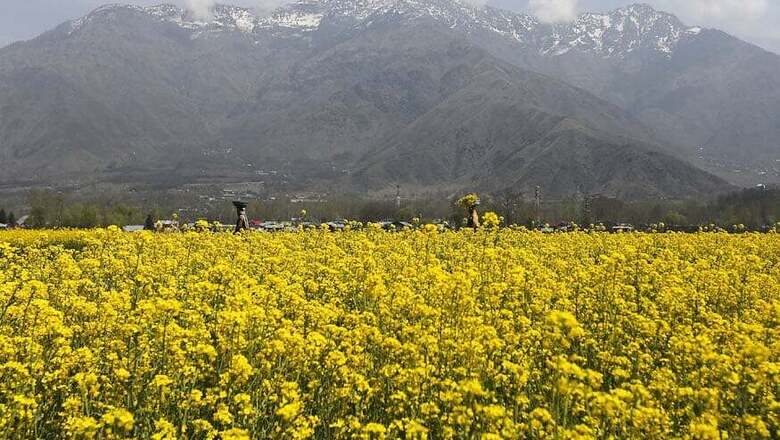
views
New Delhi: While activists may be up in arms against the approval for commercial production given to genetically modified mustard, by the government’s apex transgenic product regulatory body, senior scientists seemed to be happy with the move. Speaking to News18, scientists working with different institutions said that they welcomed the approval given to DMH11 (Dhara Mustard Hybrid 11), developed by Delhi University’s Centre for Genetic Manipulation of Crop Plants, led by Deepak Pental, former vice-chancellor of the university.
Over the years, concerns of contamination have been raised not just by activists but scientists too, making GM food crops a subject riddled with controversy and fears. The only GM crop commercially available in India is BT cotton. BT brinjal, which gained the approval of the Genetic Engineering Appraisal Committee in 2010, the apex regulatory body, under the Ministry of Environment and Forests, was stayed by the ministry itself after a furore over its commercial production. Though DH11 too needs the ministry’s final nod, some scientists are already seeing it as breakthrough technology which can lead to production of many other high yielding plant hybrids.
Dr. Govindarajan Padmanaban, molecular biologist and the former director of Indian Institute of Science, Bangalore, addressed the concerns in detail, saying that even in ideal laboratory conditions, the success rate of the plant incorporating the gene was one per cent. “We fail 99 per cent of the times, it’s not feasible that in nature the incorporated gene will transfer from the hybrid to other plants and be incorporated there.” He added that, as a scientist, he wouldn’t rule it out entirely, as “nature is superior to us”. However, the chances of this happening were “.01 per cent”.
“We desperately need higher yielding crops, especially for mustard oil,” said Padmanabhan. “Our productivity, yield per acre, is very low.” Water problems, lack of available land and rising population only exacerbate the situation.
“Hybrids aren’t easy to produce in mustard,” Padmanabhan explained, as mustard plants have “both male and female parts and are self-pollinating. Pental’s work as introduced the Barnase gene into the plant, that makes one line male sterile, while introducing the Barstar protein in the donor plant that inhibits the Barnase gene.” This means that one plant becomes male sterile and female active to accept pollen from the donor. Along with the pollen it gets the inhibitor protein which makes the plant fertile again. Thus, the plant can be crossed with different and better types of mustard lines.
“There is a naturally occurring male sterile mustard line. However, the argument against it is that the sterility breaks down and is not replaceable,” said Padmanabhan. “It is more efficient to use the modified hybrid.”
Padmanabhan’s argument is to “test both the lines and see which one is better, which will be possible when it is commercially available. It’s not going to be commercially produced on a large scale immediately, we have two years to test the hybrid and see how high its yield is.”
Though the Supreme Court stayed the commercial production of DH11 till October 2017, Padmanabhan and Reddy see commercialisation as the only way to truly test DH11’s claims of higher yields of 25-30 per cent.
“Questions are always raised when we talk of transgenic crops. The other gene introduced here is the BAR gene, which makes it herbicide resistant and that worries activists,” said Padmanabhan.
“However, a hybrid will not produce all hybrid seeds. Pental has said that herbicides will not be used in fields, only in controlled environments to select which seeds are hybrids and then take those to the fields.”



















Comments
0 comment